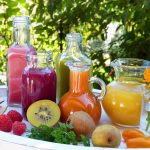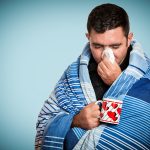Some people think it’s “normal” to grow weak, lose weight and start moving at a snail’s pace as we grow older. That it’s “normal” to lose your mental faculties and succumb to dementia.
If it’s so normal, then why are there so many active, healthy and engaged senior citizens out there?
Take Norman Lear, for example. Along with nearly everyone else in America, I was shocked and saddened by his recent death. He was 101 years old and still going strong before he died of cardiac arrest last month.
This television icon was extremely active and cognizant, even in “old age.”
He just recently finished producing a new comedy series for Amazon Freevee, which is set to be released later this year, and was also working on reboots of ‘Mary Hartman, Mary Hartman’ and ‘Who’s the Boss.’
In a People interview on his 100th birthday, he stated, “I have long felt that music and laughter add time to one’s life. It has certainly added years to mine.”
And isn’t that the goal? To feel good and amazing and laugh and sing and stay active well into old age? To come close to – or even pass – our 100th birthdays, and still go through each day feeling like we’re nearly invincible?
So why do we think it’s okay when that doesn’t happen?
To quote George Burns, another famous television centenarian from back in the day…
“You can’t help getting older, but you don’t have to get old.”
I’ll tell you right now, growing frail and forgetful in our later years are NOT caused by old age catching up with us. They are medical conditions. And there are numerous things that can contribute to them.
First comes frailty.
There is chronic inflammation, which affects the body’s immune response and leads to muscle wasting. Higher blood sugar levels contribute to frailty in both non-diabetic and diabetic older adults.
Disrupted cortisol regulation results in a loss of muscle mass and strength, a hallmark of frailty. Lack of normal daily movement leads to shortening of tendons and muscle contraction.
Low vitamin D levels are common in patients with frailty. This one is a catch-22, because if vitamin D insufficiency contributes to frailty, and frail people spend less time outdoors, then things can only get worse from there.
Patients with frailty are more likely to experience falls and end up in the hospital. Plus, when the flu, pneumonia or other viruses hit, they tend to become much more severely ill.
Then comes cognitive decline.
This is a scary link that tends to occur in the next several years after frailty raises its ugly head. It’s just a matter of time for dementia or Alzheimer’s disease to follow. And when you add dementia on top of frailty, it’s downright dangerous!
Unfortunately, the risk of cognitive impairment or dementia is up to about eight times higher among frail patients. The link is so strong that some experts believe cognitive impairment is a clinical feature of frailty.
However, you can halt the progress.
How to Stop the “Old Age” Cascade
A few years ago, a professor at the National University of Singapore engaged 250 senior citizens in a frailty study. The seniors were each assigned to a specific group.
One group kept living just like normal. Another group received physical training. The third group got nutritional training and the fourth received cognitive training. The final group participated in all of the trainings.
It turned out that all of the training therapies helped. A lot! The people in those groups became less frail and gained muscle strength. They could walk faster. Symptoms of depression improved. So did cognitive function and energy levels.
So if you take the right action, you can significantly reduce frailty and dementia risk.
In addition to taking daily walks, I recommend starting some resistance exercises to immediately begin building muscle. Chair squats, wall push-ups, and supported lunge exercises are some of my favorites. They use your own body weight to engage muscles and boost muscle mass. Plus, they are movements that strengthen the muscles your body uses every single day.
What you eat is just as important as your levels of physical activity. The foods you put into your body can lower your inflammation levels, improve your immune response, balance your blood sugar and more. These all contribute to frailty, so bringing them under control is urgent.
Fresh, organic, plant-based foods are the most powerful medicine available to you. They should be the central focus of your meals. Include all colors of the rainbow. The greater the variety, the more health benefits you’ll experience.
It’s also a good idea to replace your vegetable oil with extra virgin olive oil. Then, top everything off with zesty herbs, spices and tree nuts that are filled with anti-inflammatory phytonutrients.
When it comes to animal-based protein choices, seafood should be your number one pick. Select small, wild-caught fish like sardines, mackerel, salmon, herring and trout. On those occasions when you want a little red meat, make sure it’s grass-fed, and that your poultry is pasture-raised.
I also recommend supplementing with vitamin D3 in the cholecalciferol form and vitamin B12, since older adults tend to have insufficient levels of both.
And don’t forget to stay engaged! Not just physically, but mentally too.
Schedule dates for lunch, dinner, movies, museum visits and local events with your friends and family. Join a local sports team (even if to just cheer them on), get involved in a theater group, sign up for dance lessons. Do whatever it is that gives you purpose, keeps you active and helps you stay involved with others.
For some great mental stimulation, simply learn something new. It can be a new language or musical instrument. You can train yourself in photography or study a topic that interests you.
Or you can play games that require deductive and reasoning skills, like chess or scrabble. If you don’t have a partner to join you in multi-player games, you can still have fun with brainteasers, puzzles, logic problems and hidden object games on your own.
Like they say… Use it or lose it. And there’s never been a better time to start “using it” than today.
SOURCES:
Costamagna D, Costelli P, Sampaolesi M, Penna F. Role of Inflammation in Muscle Homeostasis and Myogenesis. Mediators Inflamm. 2015;2015:805172.
Tuttle CSL, Thang LAN, Maier AB. Markers of inflammation and their association with muscle strength and mass: A systematic review and meta-analysis. Ageing Res Rev. 2020 Dec;64:101185.
Zaslavsky O, Walker RL, Crane PK, Gray SL, Larson EB. Glucose Levels and Risk of Frailty. J Gerontol A Biol Sci Med Sci. 2016 Sep;71(9):1223-9.
Johar H, Emeny RT, Bidlingmaier M, Reincke M, Thorand B, Peters A, Heier M, Ladwig KH. Blunted diurnal cortisol pattern is associated with frailty: a cross-sectional study of 745 participants aged 65 to 90 years. J Clin Endocrinol Metab. 2014 Mar;99(3):E464-8.
Marcos-Pérez D, Sánchez-Flores M, Proietti S, et al. Low Vitamin D Levels and Frailty Status in Older Adults: A Systematic Review and Meta-Analysis. Nutrients. 2020;12(8):2286.
David D Ward, Janice M Ranson, Lindsay M K Wallace, David J Llewellyn, Kenneth Rockwood. Frailty, lifestyle, genetics and dementia risk. J Neurol Neurosurg Psychiatry. 2022;93:343-350.
Wallace LMK, Theou O, Godin J, Ward DD, Andrew MK, Bennett DA, Rockwood K. 10-year frailty trajectory is associated with Alzheimer’s dementia after considering neuropathological burden. Aging Med (Milton). 2021 Dec 15;4(4):250-256.
Kulmala J, Nykänen I, Mänty M, Hartikainen S. Association between frailty and dementia: a population-based study. Gerontology. 2014;60(1):16-21.
Good nutrition, physical training and mental exercises can reverse physical frailty in the elderly: NUS study. Press Release 2017. National University of Singapore.S
Ng TP, Feng L, Nyunt MS, Feng L, Niti M, Tan BY, Chan G, Khoo SA, Chan SM, Yap P, Yap KB. Nutritional, Physical, Cognitive, and Combination Interventions and Frailty Reversal Among Older Adults: A Randomized Controlled Trial. Am J Med. 2015 Nov;128(11):1225-1236.e1.




